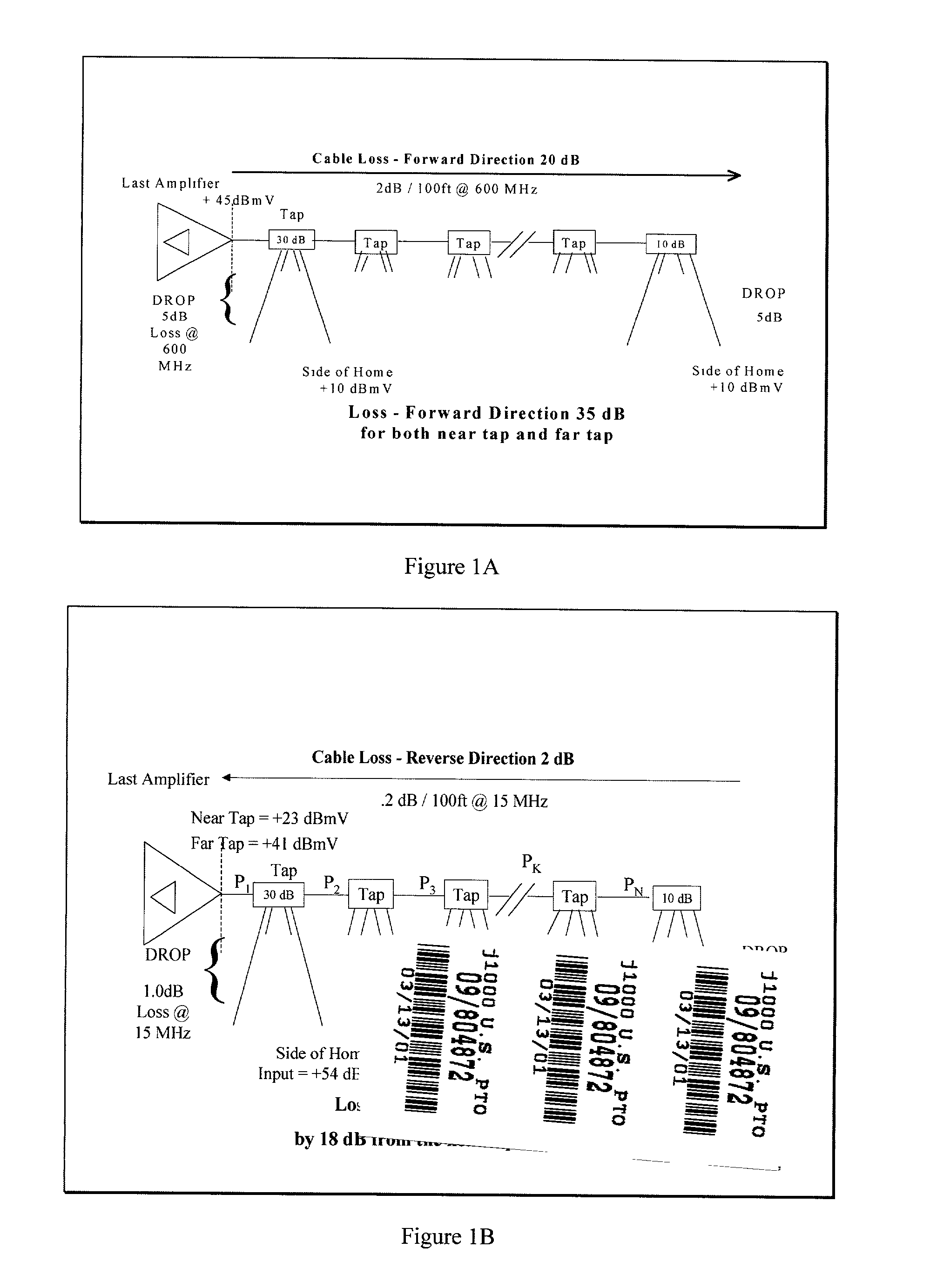The problem that cable
system operators face today is that the low band RF spectrum is highly susceptible to leakage of unwanted stray signals and RF interference from a variety of sources (collectively labeled "Ingress
Noise").
In a worst case situation, no
usable return signals may be received from a particular fiber node and all two-way communications capability is lost.
The reason that Ingress
Noise in the return RF band is the dominant problem facing network operators is two-fold.
First, use of the lower portion of the RF spectrum of a cable
system (5-30 / 42 MHz) for return path transmissions has one serious
side effect, the outer conductor of the
coaxial cable does not shield as effectively in this low band as it does at higher frequencies.
Stated another way, at lower frequencies the cable's shielding is more ineffective and more susceptible to picking up unwanted signals than at higher frequencies.
However, in the return path, the effect of high levels of
RF noise and ingress is to lower CNR levels of the return RF signals and may seriously damage or destroy the ability of NIUs to communicate or, in the case of
spread spectrum technology, drastically slow down
network performance.
Unfortunately, there are several other transmission impediments that also degrade the reverse path performance and exacerbate the effects of stray and interfering carriers on the upstream RF spectrum.
However, the reverse path of most cable systems today is not engineered to support
unity gain.
The reason is that the loss plan for the forward direction of the cable plant (or
high frequency portion of the cable plant) is not the same as that for the reverse direction or
low frequency portion of the cable plant due to the fact that cable loss increases with higher frequency.
As one moves further away from the last two-way
amplifier, loss in the forward direction is the result of a combination of distribution
trunk losses as well as tap (directional coupler) losses.
One of the operational side effects of this is that RF signals exiting every subscriber premise network do not arrive at the first
amplifier (or subsequent return amplifiers and by extrapolation, the cable system headend) at the same
nominal level.
Besides the obvious effect that an amplifier might go into overload, it becomes difficult to calculate the Carrier-to-
Noise Ratio (CNR) and predict the expected system
transmission performance when:
The problem with this approach to organizing the return path of a cable system is that the cable system is now more susceptible to
noise that enters through directional couplers furthest from the first return amplifier A second problem with this approach is that reducing the NIU
transmitter signal strength substantially reduces the Carrier to Noise (C / N) of the return
signal.
The
Carrier to Noise ratio under this situation could be as low as 10 dB, which is inadequate for most two-way cable applications.
However, any rise in the
noise power by 1-3 dB could result in highly errored traffic in the reverse signal path.
The problem the cable operators now face is how to
attack the second, and larger source of ingress noise, the customer premise
distribution system.
This fact has led to the following problem--most, if not all, of the noise introduced in the return path of today's two-way HFC network originates within the subscriber's premise cable system network.
Ingress within the subscriber premise can occur when subscribers build out their premise cable plant and do not use high quality, heavily
shielded cable, do not use high quality splitters, do not terminate unused drops, and do not attach connectors properly, among other causes.
This approach has been, for the most part, rejected for reasons of cost and the belief that this will not solve the noise problem because cable subscribers will, over time, modify and build out these networks and the cable operator will be left with the same problem after incurring the cost of replacing the premise network.
Again, this solution is expensive and is still subject to noise and interfering signals being superimposed on the "connector cables" between the wall and the NIU.
The problem with all of these solutions is that they really do not solve the problem of noise egressing from the premise network into the outside cable plant.
These approaches only
mask or
delay when the problem begins to affect the outside
cable network and its performance.
The subscriber's premise cable system wiring will be subjected to high levels of RF noise from AC motors, fluorescent lights, 60 cycle noise, and other subscriber based noise and interference sources.
The subscriber's premise
distribution system is unlikely to ever be replaced, and even if it were replaced, would still be a source of noise into the outside cable system.
 Login to view more
Login to view more  Login to view more
Login to view more 


